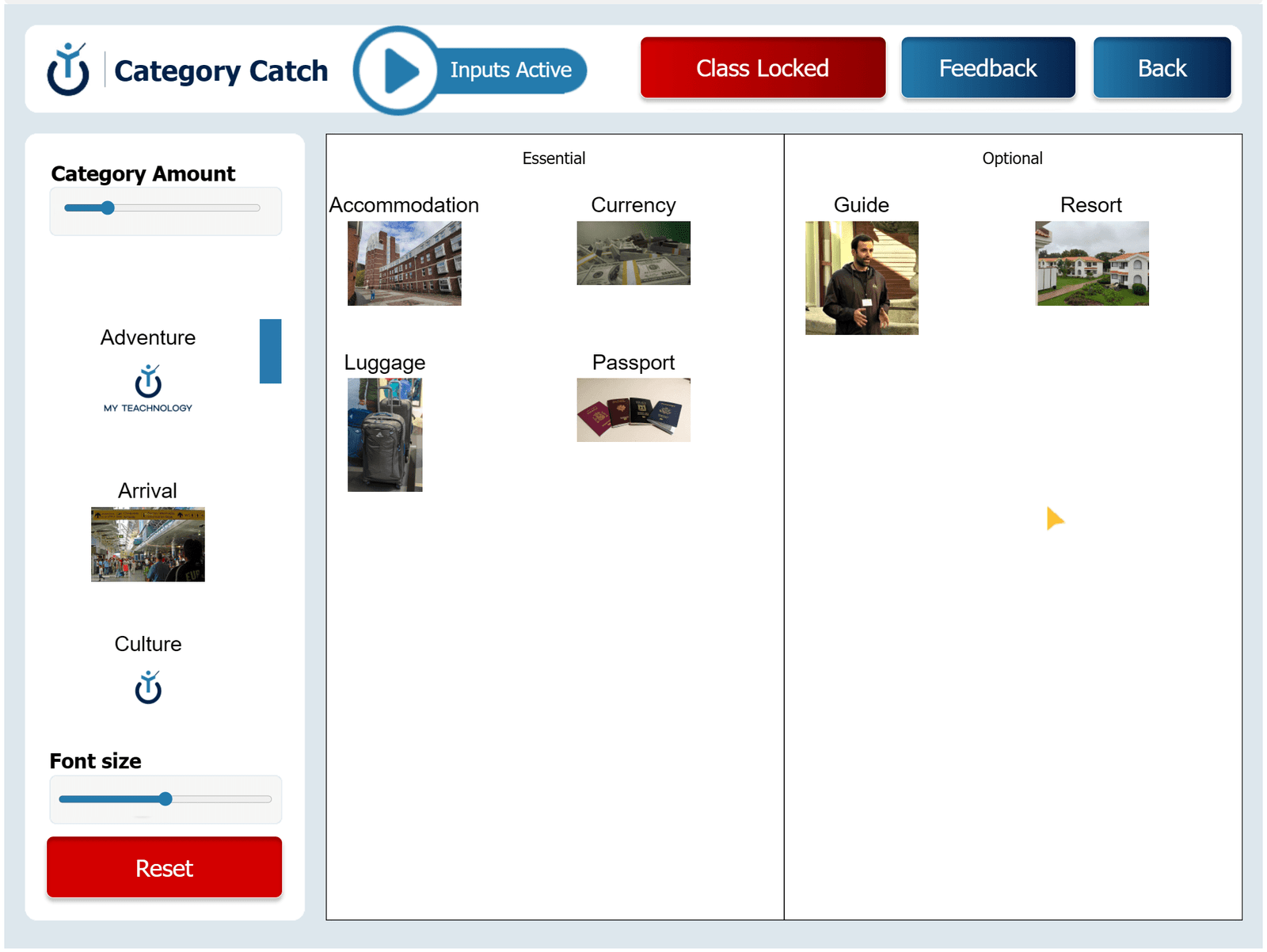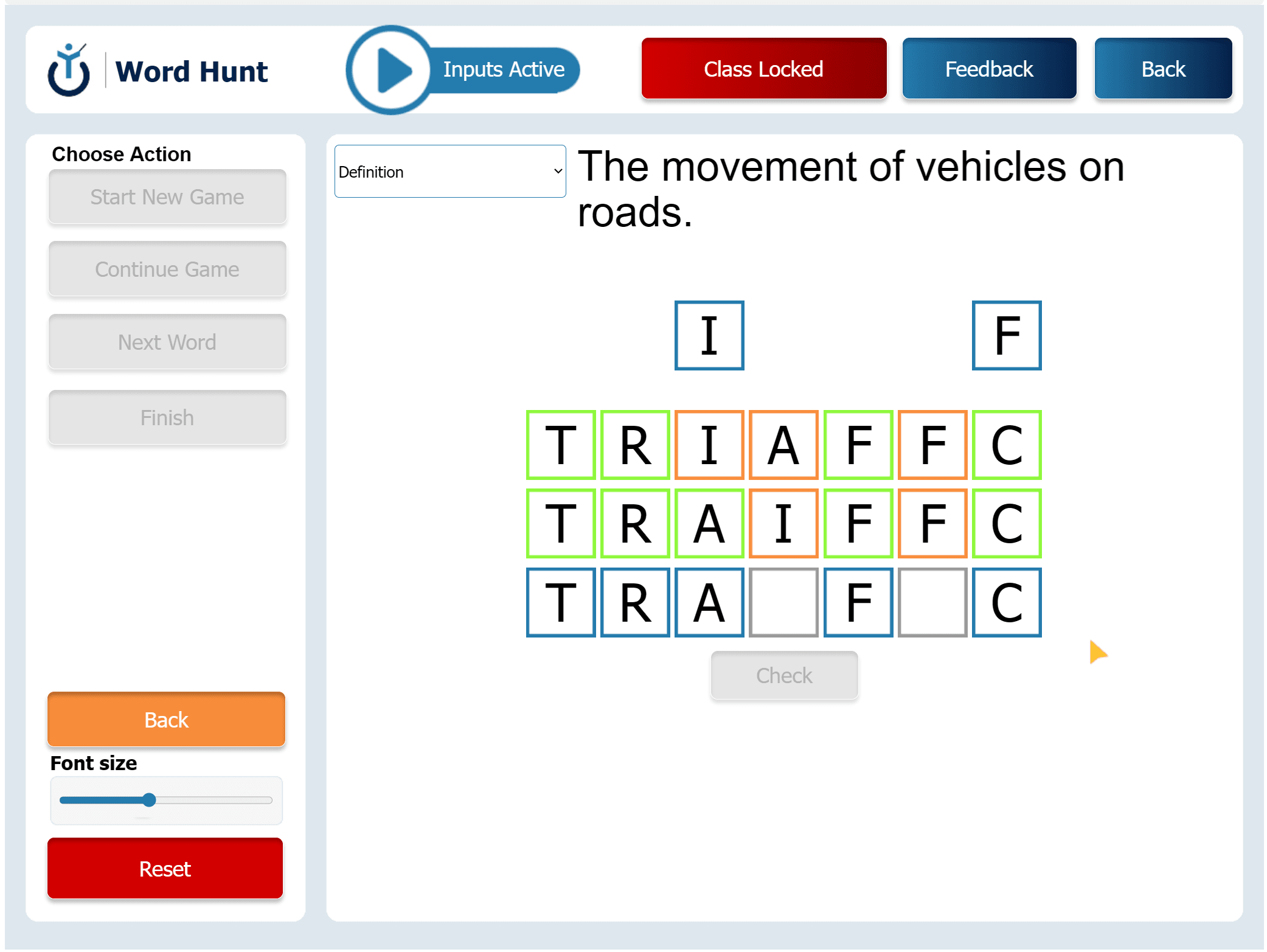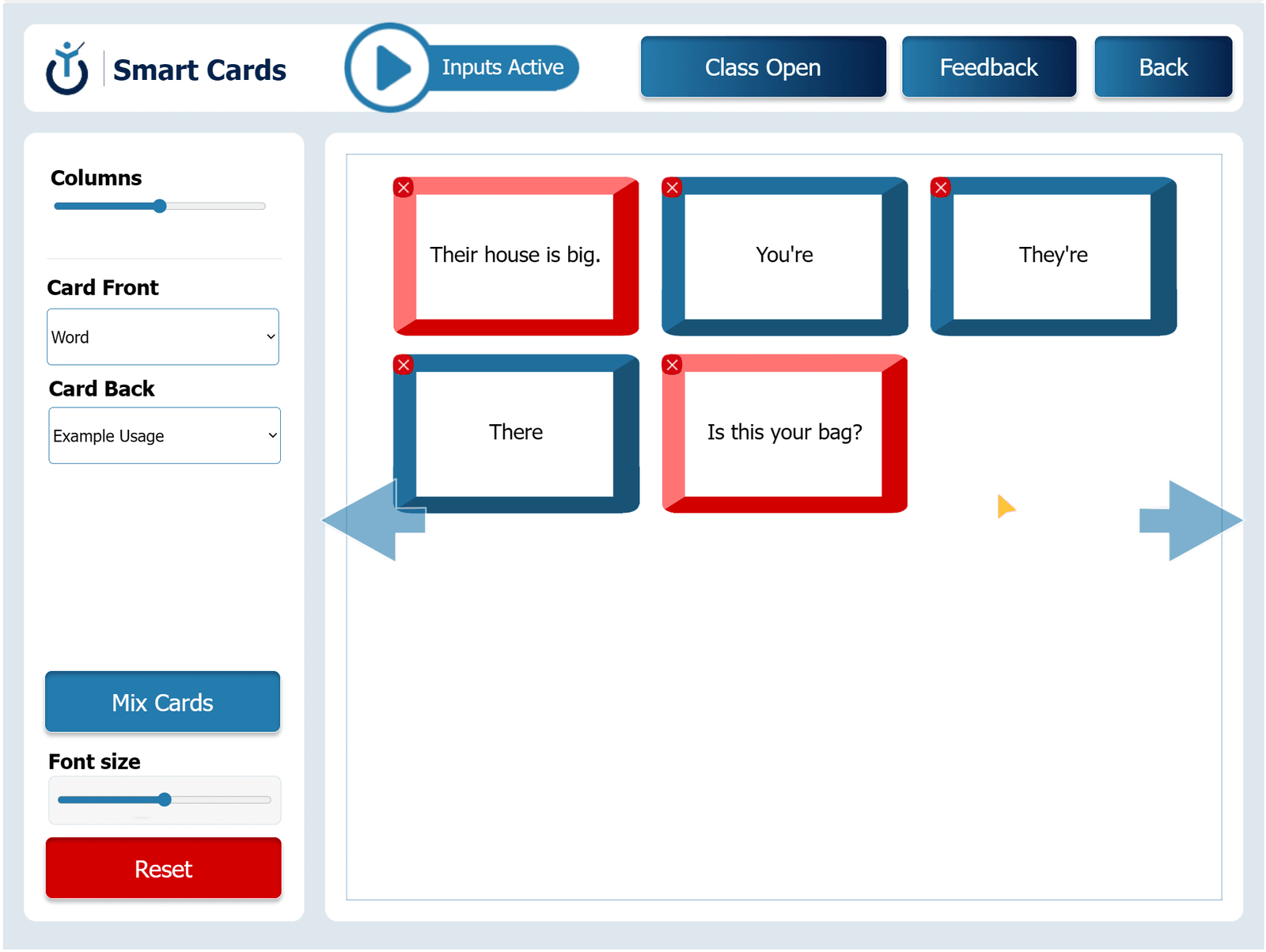Category Catch helps students practice sorting vocabulary words and images into different groups. After choosing or creating categories, students organize each item by what it has in common. This builds vocabulary knowledge, thinking skills, and conversation practice. Teachers can ask follow-up questions to help students explain their choices and understand word meaning more deeply.
Theme and Tone Tracker
Objective: Sort words by the feeling or theme they match.
Instructions: Students choose a theme or feeling, like “Adventure,” “Sadness,” or “Humor.” They get a list of words or images and put each one into the best-fitting category. For example, the word “exciting” could go in “Adventure,” and “lonely” could go in “Sadness.”
Follow-up: Students explain their choices. Teachers ask questions like, “Why does this word fit Adventure?”
Parts of Speech Challenge
Objective: Practice identifying nouns, verbs, and adjectives.
Instructions: Students sort words into “Noun,” “Verb,” or “Adjective.” They can check their answers by saying a short sentence with the word in it.
Follow-up: Review any words that were hard to place. Talk about how knowing the part of speech helps when making sentences.
Prefix and Suffix Sort
Objective: Learn how prefixes and suffixes change word meanings.
Instructions: Students choose categories like “re-,” “un-,” “-ful,” or “-less.” Then they sort words into the correct category (for example, “unhappy” goes under “un-”).
Follow-up: Talk about what the prefix or suffix means and how it changes the base word.
Category Connections
Objective: Group words based on topic or meaning.
Instructions: Choose categories such as “Nature,” “Emotions,” “Actions,” and “Objects.” Students look at each word or image and decide where it fits best.
Follow-up: Ask students to explain why they chose a certain category and if any items could go in more than one.
Word Feelings
Objective: Understand if words feel positive, neutral, or negative.
Instructions: Use categories like “Positive,” “Neutral,” and “Negative.” Students look at each word and sort them based on the feeling they give. For example, “brave” is positive, “normal” is neutral, and “selfish” is negative.
Follow-up: Talk about words that were difficult to decide. Discuss how word choice changes the feeling of a sentence.







